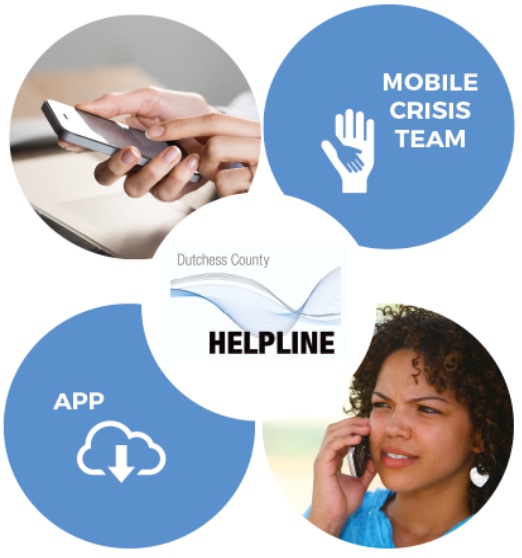LTC Caroline Pogge Gives A Woman's Perspective During Veterans Day Speech in Beacon
/The Veterans Ceremony in Beacon on Sunday, November 11, 2018, was moved indoors after the chilly air proved to be too cold for most who were attending, including children, Girl Scouts, Boy Scouts, veterans, city leaders, and the public. The keynote speaker was LTC Caroline Pogge, who, according to her speech, was in part asked to deliver it so that people could get a female perspective on serving in the military.
Her speech was given on the 100th anniversary of signing of Armistice, which marked the ending of World War I. In the second half of her speech, she gave a brief history of women’s involvement in serving in the military of this country - which began in disguise and in secret.
The lieutenant colonel followed up with a small part of her own story of serving in Iraq. LTC Caroline Pogge granted permission to A Little Beacon Blog to publish her speech in full here, with headlines added to help you skim down.
Following that is the video provided by the City of Beacon of the entire event, where you can also listen to her speech. We wanted to publish in text to help share the stories in history.
Good morning! Thank you for the wonderful introduction. As a 22-year and counting veteran, it was an honor to be asked to speak with you this morning. Not only because of what Veterans Day represents, but more specifically because of what THIS Veterans Day represents. 100 years ago today, the German delegation signed an Armistice in a train car outside of Paris, formally ending the “War to end all wars.” Unfortunately, as we know, this was not the case.
While there was an end to international involvement in the war, it was not an end to regional instability as civil wars, revolutionary and counter-revolutionary conflicts emerged across the globe. As nations split, empires collapsed and monarchies abdicated, boundaries were redrawn and new nations were created. In many cases this resulted in new players scrapping for position, some with less-than-honorable intentions as extremist attitudes, including ethnic cleansing, emerged.
This was not limited to Europe, but rather spread across to the Middle East with the fall of the Ottoman Empire; to Asia where Korea, influenced by President Wilson’s 14 Points, protested their independence and the Chinese Civil war raged; and to Africa where nations were trying to make sense of newly drawn boundaries that had little to do with cultural demographics.
All the while, the global struggle went seemingly unnoticed in America. Many of us spent a very short time discussing World War I and its global impact. Certainly far less time than we spent learning about the Civil War or World War II. For most Americans, it can be summed up simply as: WWI was a decisive victory brought about by American bravery and might.
WWI had a relatively small impact on the U.S. population, particularly when compared to Europe. During the one-year U.S. involvement, approximately 50,000 troops died from combat and another 50,000 died from the 1918 influenza pandemic. Unfortunately, the peace of WWI would fail and the ripple effect would have a tremendous impact on America for years to come.
By ignoring the wildfires spreading across Europe, America and the international community (led by the newly formed League of Nations) quickly learned a difficult lesson: that peace can not be won by simply stopping combat operations; rather, lasting peace must be reinforced through stability. This hard lesson influenced the development of the Marshall Plan after WWII and COL Hunt’s drafting of a Congressional report formally recognizing my specialty of Civil Affairs as a military function. Both these events continue to influence our military operations today.
But who are these soldiers and statesmen, fighting one day and securing the victory through stabilization operations the next? They are Americans who, as LTC G. Edward Buxton described in the American Legion’s Constitution Committee Report in 1919, “fight to perpetuate the principles of Justice, Freedom and Democracy.”
They are Americans who serve selflessly, not for accolades and praise, but as D. Bernard Ryan wrote home in November 1918, troops who want to know we “had contributed by personal contact to the rout of the Enemy and his defeat.” And simply knowing that makes our efforts “worth all we have endured.”
I’d like to now ask my fellow veterans, particularly those who may be standing incognito in today’s crowd, to make yourselves known as I announce your conflict era:
Among the 20.4 million living veterans, less than 10% of our population, there are fewer than 500,000 living WWII-era veterans.
1.3 million Korean War-era veterans (pauses for anyone to stand)
6.5 million Vietnam War-era veterans (pauses for anyone to stand)
and our current conflicts are included in the 7.4 million Gulf War-era veterans.
“Women Represent About 9% of the Veterans”
Of these, women represent about 9% of the veterans, a number expected to grow to nearly 18% by 2045. I was asked to speak a bit about my service as a woman in uniform. To do this I need to take us through another brief history lesson.
When Women First Started Serving In The Military - In Disguise or Unrecognized
While our formal involvement in the military is growing, women have served since the Revolutionary War, albeit not always in a sanctioned role. There are countless stories of women serving alongside their spouse or family member in disguise or even as spies. For example Deborah Sampson, who during the birth of our nation, in 1778, was the first woman to enlist, although as a man under the name Robert Shirtliffe. She served for three years before she was discovered while being treated for an illness, thanked for her service and promptly discharged.
Young Woman Rides Twice The Distance Of Paul Revere To Alert that British were Coming, Yet Remains Unknown
Or you may have heard about the Hudson Valley’s own Sybil Ludington, who on the night of April 26, 1777, at the age of 16, rode between Putnam County, NY, and Danbury, CT, alerting militia of the approach of British forces. We all know the story of Paul Revere, but despite riding nearly twice the distance and given her much younger age, even many locals do not know Sybil’s story!
First African-American Woman to Enlist In Army During Civil War - As A Man - As Buffalo Soldier - Was Discovered and Discharged After 3 Years
Fast forward to the Civil War and let me introduce you to the first African-American woman to enlist in the Army, Cathay Williams. She spent three years as one of the Buffalo Soldiers before being discovered and discharged from service.
Woman Surgeon Volunteers As Nurse - Since Female Surgeons Weren’t Permitted To Serve
Others were able to more openly serve, such as Dr. Mary Edwards Walker, who volunteered for the Union Army as a civilian nurse since women surgeons were not permitted to serve. Her work caused her to frequently cross battle lines to treat injured civilians and even resulted in her capture by Confederate troops, who arrested her as a spy. During her military career, she was eventually awarded a commission as a “Contract Acting Assistant Surgeon,” which made her the first-ever female U.S. Army surgeon.
Women Begin Formally Joining The Fight in 20th Century
Moving into the 20th century, we are witness to many women joining the fight, be it on the frontline, in the sky, or at sea. Mary Borden, born into a wealthy Chicago family and educated at Vassar College, used her passion and funds to create field hospitals on the front lines of WWI, which were credited for saving countless troops’ lives.
In WWII, the military finally started to recognize and award veteran status to women, but only to a handful of female Air Force service pilots, such as Irene Kinne Englund, who spent 18 months ferrying military aircraft, transporting medical patients and towing aerial gunnery targets which freed up men for combat service overseas. The tide began to change in 1948, with the passage of Law 625, “The Women’s Armed Services Act,” which allowed women to serve in fully integrated units during peacetime and leaving the Women’s Army Corps as the only remaining separate female unit.
But in reality, even women’s efforts during the Korean War and Vietnam were often little recognized and hard-earned. It is literally within my lifetime that women’s involvement has really increased. In 1976, two years after I was born just up the road at Vassar Brothers Hospital, the first group of women was admitted to join the military academies’ Classes of 1980.
“Women Continued to Blaze Trails Despite the Obstacles Such As Combat Limitations”
Women continued to blaze trails despite the obstacles such as combat limitations, which often limited their career progression. Mostly, women simply wanted to do what they were trained to do and serve beside their fellow troops. No one stopped LTC Eileen Collins and LT Celeste Hayes as they flew assault teams and wounded troops in and out of Grenada during Operation Urgent Fury in 1983, or CPT Linda Bray, who, at 29 years old in 1989, became the first woman to command American soldiers in battle, when she led a company of MPs during the invasion of Panama.
Women Were Banned From Combat Roles Until Recently
It was during the 1991 Gulf War that many Americans began to recognize the volume of women in uniform. Having come a long way from a few hundred troops, often in disguise, to over 40,000 women in uniform, we were no longer relegated to “safe” administrative and medical roles. Despite officially being banned from combat roles until just two years ago, we were still flying aircraft, serving on staff at the front lines and in some cases working right in the middle of combat operations.
SGT Leigh Ann Hester, who earned the Silver Star (the third-highest decoration for valor) for her role as a Military Police team leader during a convoy ambush in Iraq in 2005, and 19-year-old Army SPC and Medic Monica Lin Brown, who also earned the Silver Star for running through gunfire to shield wounded soldiers during a roadside attack in Afghanistan in 2007, are testaments to not only the amazing women I have the honor of serving with, but also great examples of why in 2013 Secretary of Defense Leon Panetta lifted the ban on women serving in combat, which became effective in 2016.
LTC Caroline Pogge’s Own Story
In reality, we have been serving in combat for decades, often by capitalizing on technical loopholes. Don’t tell my mother, or maybe more importantly don’t tell the Army, but in reality, when I crossed the berm from Kuwait into Iraq in the first week of April 2003, I was technically not allowed to participate in combat. But as a Civil Affairs soldier attached to the 2nd Armored Cavalry Regiment, my role took me through tank battles, leapfrogging elements of the 101st and 82nd Airborne, to finally settling into Baghdad on 17 April before ground combat was officially declared over.
In reality, I was looking forward to crossing the berm. Not because of a desire to go to war, or a drive to prove myself. But honestly I just wanted to leave Camp Arifjan, Kuwait, where someone was preying on female soldiers during SCUD attacks. Yes, while we were preparing to move north into armed conflict, I needed an escort to go to the latrine after dark because of a series of assaults on female soldiers.
Once in Iraq, my driver, SGT Betty Navarro and I, would notice the minute the locals “spotted us.” I frequently had to overcome additional cultural obstacles to achieve my mission, as often curious Iraqis would be surprised that a “woman could be in charge.” But being a female also had its advantage as frequently the ladies would welcome us into their community and offer us access unavailable to our fellow male troops.
Thankfully, I believe the military is much easier to serve in today for women than it was even 40 years ago. We are paid based on the same pay scale as men. We are now afforded the opportunity to serve in any role across the service, and have the same chances to succeed as our male counterparts.
“I Still Get Frustrated When Someone Sees My Veteran Tag On My Car And Asks If My Husband Served.”
I can only imagine the path the ladies before me had traveled and the obstacles they had to overcome which enabled me to stand before you today. From the days of Deborah Sampson hiding her gender in order to fight for her country, we have come a long way. It’s still a male-dominated profession, and I still get frustrated when someone sees my veteran tag on my car and asks if my husband served. But at least I can offer a smile and simply reply, “I don’t know. I haven’t met him yet.”
Let me close by asking one thing from all of you. They say one of the greatest things we can offer the next generation is inspiration. I hope you look around this crowd, and across our community at the many veterans who have served during peace and conflict over the past century and see countless reasons to be inspired. See the veteran who was drafted and sent to a place they may not even know to fight for justice, freedom and democracy. See the veteran who chose to join the ranks and found themselves standing watch to protect our way of life in far-away places. And see the veteran who today finds themselves in places like Afghanistan, Djibouti or Poland working to secure a lasting peace through the stabilization of democracies and economic freedom around the world. All these veterans are an inspiration and represent the best of what we can offer as Americans.
While President Theodore Roosevelt was addressing Civil War veterans in 1906, his description still rings true: “Veterans by their lives, by the records of their deeds, teach us in more practical fashion than it can be taught by any preaching, for they teach us by practice that the ultimate analysis of the greatness of a nation is to be measured not by the output of its industrial products, not by its material prosperity, not by the products of the farm, factory or business house, but by the products of its citizenship, by the men and women that that nation produces.”
By this measure alone, America is a great nation! Thank you to the many veterans in attendance here and particularly those standing watch today in posts around the world. It is an honor to serve with you. I wish everyone a happy Veterans Day, and may God Bless America.
What Is A Civil Affairs Specialty?
You may have wondered what “civil affairs” meant as Caroline mentioned it. We did too! Here’s how Caroline describes it:
“Civil affairs is a military specialty like infantry or military police. Essentially, we're the middlemen between the military and civilian populations, attempting to minimize the impact of conflict on the civilians and the interference of civilians in military operations. Post-conflict, we work with civilian populations in an attempt to get basic services back up and running. Pre-conflict, we attempt to identify gaps or areas of potential concern that could offer violent extremist actors to exploit the population and cause instability.“




































